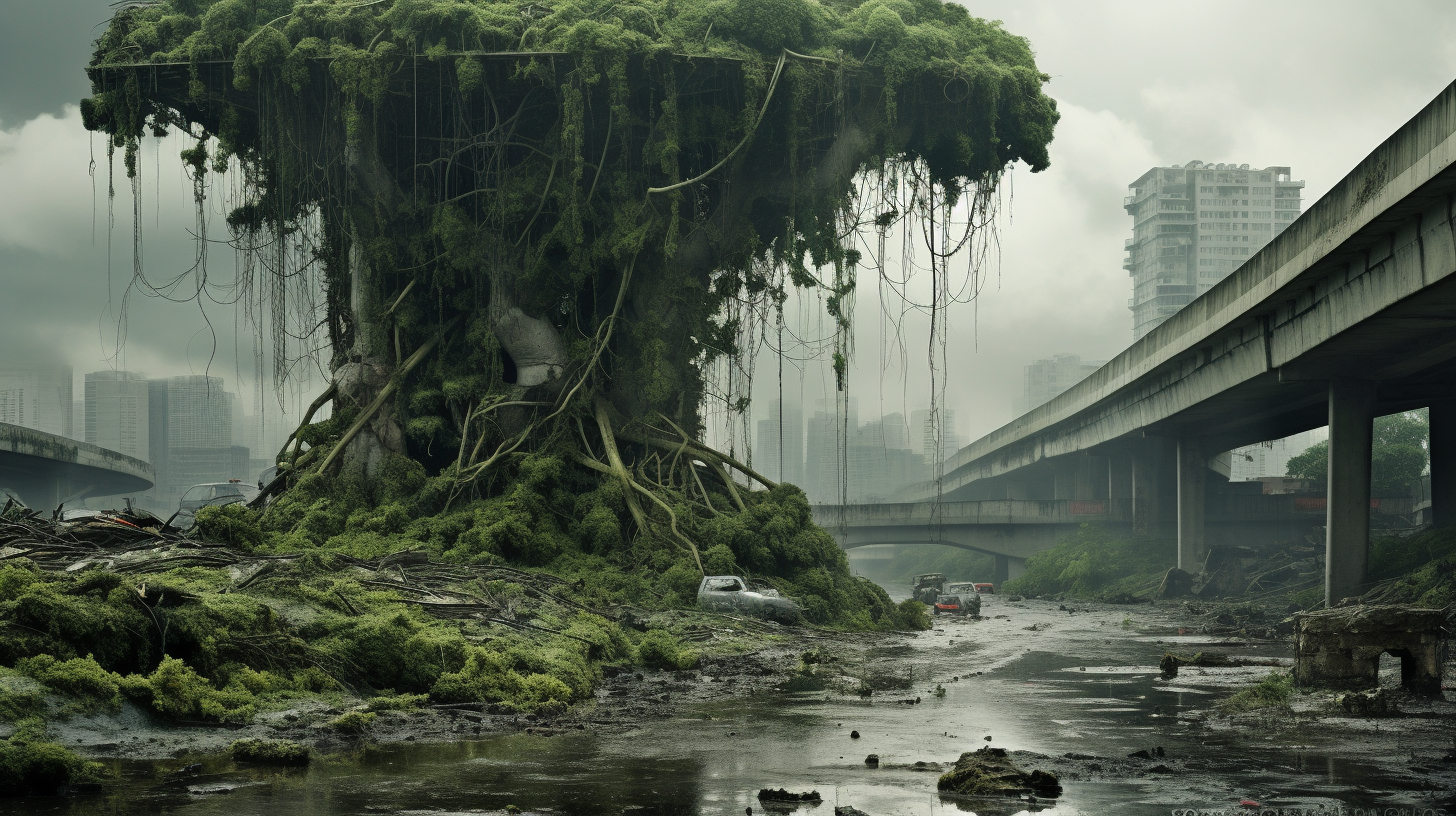In an entropic dance between decay and life, Mother Nature’s tendrils creep through the cracked pavements and broken infrastructures of our once-thriving metropolises. This is a journey into the heart of our concrete jungles where, against all odds, a green flame flickers amidst the monochromic grey. But as we stand today, observers of the far-reaching effects of environmental neglect, this resurgence of nature in urban spaces is a poetic yet haunting spectacle.
The concept of ‘Urban Resilience’ has long been academic jargon, connoting a city’s ability to bounce back from calamities and disruptions. What wasn’t expected, was for our flora to stage a comeback in the absence of human stewardship, accentuating a stark contrast between a world that once was, and what it is inevitably becoming.
In the shadows of skyscrapers that now bow mournfully to time, wildflowers sow seeds of change. Fierce plants break through walls, turning office towers into vertical forests that sway with unsettling silence. Streets, emptied of their roaring engines, are now rivers of green, where saplings claim sovereignty over rusting carcasses of cars. This caricature of evolution juxtaposes the remnants of technological progress with the relentless advance of natural forces – a vivid illustration of our frail creations against the indomitable will of life.
Indeed, these scenes are not derived from a post-apocalyptic novel, but realities of urban centers where humanity’s hammer has been dropped. In New York, Central Park has burst its banks, flora breaching its boundaries in an act of rebellion against artificial limits. Tokyo’s Shibuya Crossing, once a blizzard of neon and noise, is now a tranquil glade, the incessant hum of insects replacing human chatter. London’s Thames, suffering centuries of pollution, cradles newly sprouted mangroves flush with migratory birds, reclaiming its banks as their ancestral homes.
Amidst this rebirth, wildlife resurfaces in defiant splendor. Deer meander through Parisian avenues; wolves howl in the distance within Chicago’s forgotten districts, and flocks of birds colonize disused airports, their runways landing strips for seeds and pollen rather than planes. The collapse of ecosystems was feared irreversible, yet here, nature demonstrates a different portfolio of survival skills. It’s a display of resiliency, a testament to adaptability, and perhaps a dash of nature’s own form of poetic justice.
However, the beauty of this resurgence is marred by the context of its occurrence. Our green dystopia serves as a morbid canvas—the extreme repercussions of our disregard for the environment are painted with a grim palette of what-ifs and too-lates. These urban landscapes, where nature’s resurgence unfolds with a grim grace, are not celebrations of life, but rather memorials of neglect. They are mirrors reflecting the faded image of modern civilization, overgrown and overshadowed by Mother Nature’s unsolicited redemption.
The phenomenon merits scientific inquiry, artistic exploration, and philosophical contemplation, for it is not just the earth beneath the concrete that stirs. The real tremor comes from within us, from the realization of our vulnerabilities and the specter of our legacy. Do these thriving ecosystems herald a new age of post-human environmental recovery, or are they just fleeting whims before the throes of climate chaos?
As we end this exploration, we ask ourselves: when Nature reclaims what was rightfully hers, what becomes of our place in the world? What we witness at the crossroads where green meets grey is a saga of resilience, but also one of warning. It is a cautionary tale, whispering urgently to the present, admonishing us to contemplate the future – a future where, perhaps, we no longer are.
We live in a time where the textured tapestry of cityscapes transforms unwittingly into a lush mosaic of life and decay. Surrendering to the green dystopia is not an option but an inevitability – an inevitability that we are compelled to witness, one overgrown roadway at a time.
